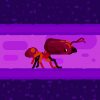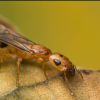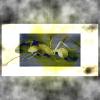Hello! Is there any carnivourous plants experts/keepers there?
I want to buy a venus fly trap(or any easily obtainable carnivourous plants). But I have to leave for Canada in august(I'm in south korea rn).
My grandparent's place has a stream very close to it, practically in the backyard, and I was wondering if it would be possible to plant carnivourous plants there? The environment is perfect for them. Low-nutrient soil, constant supply of water, and LOTS of bugs. I also searched if there are carnivourous plants in korea and google said yes, so the environment shouldn't be a problem.
Thanks in advance.
I'm looking up VFTs and they seem less likely to spread than, say, Cape sundew (of which, by the way, I once ordered a single specimen but in a few months I had dozens of seedlings popping up all over my other purchases and years later, despite giving lots away and accidentally killing some, I still have a bunch).
I have a somewhat different opinion with VFTs. If you're going to be going back to live there and it's very temporary to keep them watered while you're gone, I don't see why you can't temporarily plant some VFTs and dig them up later so they don't spread, assuming it's not violating local laws. Their flowering season is spring so it's unlikely they will flower and go to seed if you're only gone a month in August. Though just the dirt itself can bring in exotic pests (e.g. invertebrates). If you do see flowers at any point, I'd cut them off as (1) they are fairly plain unlike, say, Pings (2) they drain energy from the plants and (3) you don't want them to spread.
I look around my American neighborhood and there aren't many native plants or trees around here - many from South Africa, or Europe, or Asia. I'd much rather have more native species, so I'm not saying you should risk adding an introduced exotic plant, but kept in containers, VFTs are great for getting people excited about nature so I'm very lenient to them as ambassador species. A temporary stay in the ground so they get plenty of water doesn't seem bad. If they mostly live in a self-watering container you can also take them around to show them off and spark some discussion about fascinating organisms. (Just be aware those self-watering containers are easy to tip over if you're driving around with them to take to school for kids to see.... Don't ask me how I know....)
Edited by OhNoNotAgain, Today, 9:32 AM.
Formiculture Journals::
Veromessor pergandei, andrei; Novomessor cockerelli
Camponotus fragilis; also separate journal: Camponotus sansabeanus (inactive), vicinus, laevigatus/quercicola
Liometopum occidentale; Prenolepis imparis; Myrmecocystus mexicanus (inactive)
Pogonomyrmex subnitidus and californicus (inactive)
Tetramorium sp.
Termites: Zootermopsis angusticollis
Isopods: A. gestroi, granulatum, kluugi, maculatum, vulgare; C. murina; P. hoffmannseggi, P. haasi, P. ornatus; V. parvus
Spoods: Phidippus sp.




















